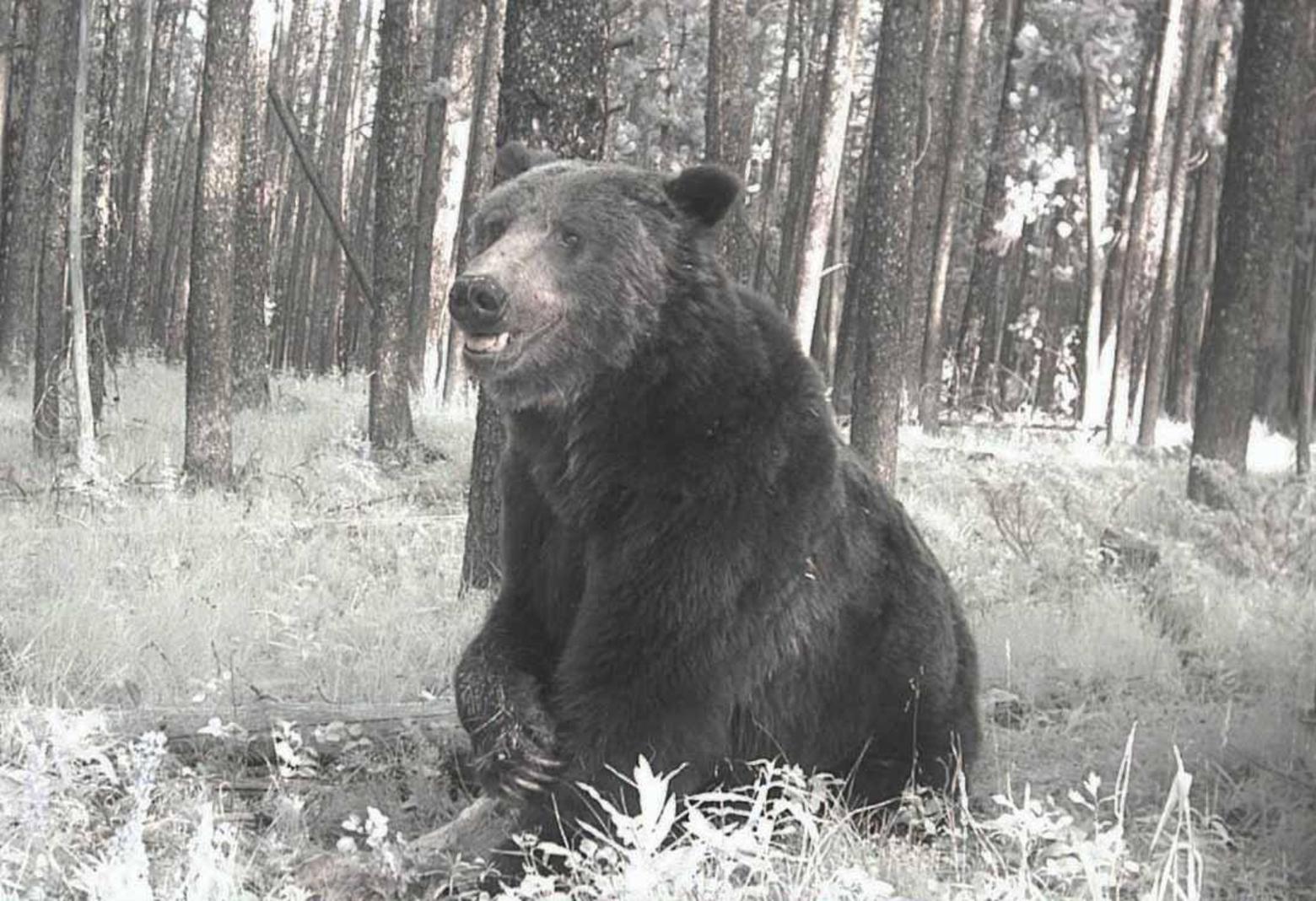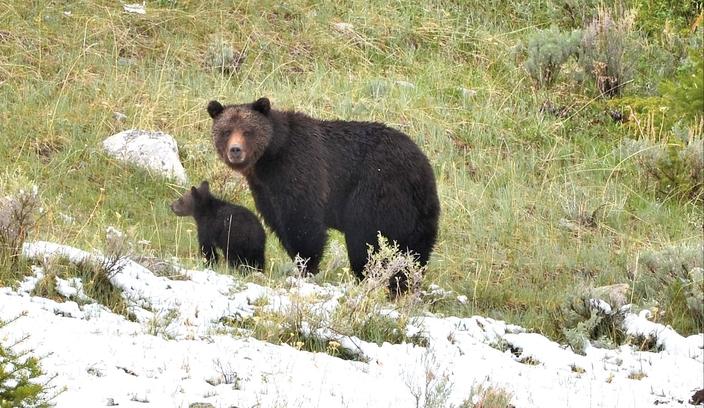Back to StoriesFWP Launches Online Dashboard to Track Grizzly Bear Deaths
December 4, 2024
FWP Launches Online Dashboard to Track Grizzly Bear DeathsAs delisting decision looms, Montana increases transparency with mortality monitoring tool
by Sophie
Tsairis
Montana
Fish, Wildlife and Parks has introduced a new online dashboard to provide
transparent tracking of grizzly bear mortalities across the state. The tool
comes at a critical time as wildlife managers anticipate a decision that could remove
Endangered Species Act protections for grizzly bears.
The
dashboard, released at the end of September, provides daily updates on grizzly bear
deaths, including crucial details such as date, location, sex and cause of
mortality. It does not include deaths on lands managed by Native American
tribes.
This year is
proving to be particularly deadly for grizzlies in the Greater Yellowstone
Ecosystem. According to the Montana dashboard and data from Frank van Manen,
supervisory research wildlife biologist for the Interagency Grizzly Bear Study
Team, 71 grizzly bear mortalities have already been confirmed in the GYE this
year, compared to 46 in 2022 and 49 in 2023. Of those 71 deaths,
29
were confirmed in Montana.
This data
arrives amid growing scrutiny of wildlife management practices, including a
recent federal court ruling on November 7 that found Wildlife Services violated
environmental policy in its approach to managing problem bears.
Van Manen
told Mountain Journal in an email that the most common cause of death in
2024 for grizzlies in Greater Yellowstone has been removals associated with
livestock depredations and mortalities resulting from circumstances related to human
self-defense. He said grizzly bear mortalities fluctuate from year to year, and
that the last few have been relatively low so he isn’t surprised numbers are
higher this year. He also noted the difference between data within the
demographic monitoring area—defined in part by suitable grizzly habitat and
includes Yellowstone and Grand Teton national parks and surrounding national
forests—and outside of those boundaries, where mortality risks are higher.
“Within the DMA, we documented 43
mortalities in 2024, which is below the years of 2015, 2017, 2018,” he wrote. “Counts
of the cause of mortality for 2024 are within one or two mortalities of the
10-year average for all categories, except for cattle depredation, which is
twice the 10-year average. Livestock-related mortalities were at the 10-year
average in 2023 and half the 10-year average in 2022, reflecting that these
[types] of conflicts are somewhat cyclic.”
Van Manen explained that targeted removal of depredating
bears can be a very effective technique to reduce livestock conflicts for
several years after removal. Conflicts may rise again as other bears move in
over time. “This year looks like one of those years,” he wrote.
In a statement
announcing the Montana dashboard, FWP Chief of Conservation Policy Quentin
Kujala wrote: “Tracking grizzly bear mortality is a key metric when we look at
bear management. The dashboard allows us to be transparent with the public on
what kinds of mortality we’re seeing and what the causes are. It will also help
reinforce our consistent message of securing attractants and being bear aware
to avoid conflicts.”
Montana
wildlife agencies are preparing for a decision from the U.S. Fish and Wildlife
Service on ESA protections for grizzlies, which USFS expects to announce in
January 2025. In August, Mountain Journal spoke with Executive Director
of Wyoming Wildlife Advocates’ Kristin Combs about the decision delay and potential
delisting.
Related Stories
April 11, 2025
Considering Grizzlies, Judge Stalls Grazing Plan North of Yellowstone
In a win for environmental coalition, wildlife agencies ordered to review livestock grazing impacts on grizzly bears.
November 11, 2024
CWD Detected in Ruby Mountains and Flathead Valley
Montana FWP urges hunters urged to help track and mitigate spread of deadly chronic wasting disease.
January 14, 2025
Feds Look to Expand Montana’s Largest Coal Mine
The 19-million-ton expansion is estimated to extend Spring Creek Mine’s operational life by five years.




